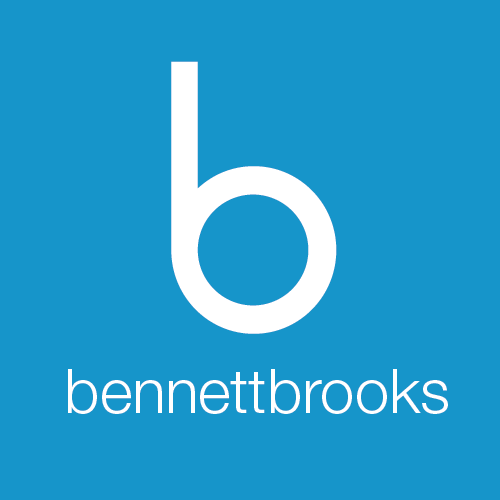The associated company rules in themselves are not new, but a reminder is helpful as, from 1 April 2023, the associated company rules will apply and will impact:
- the rate of corporation tax paid by companies (confirmed will be 25% still as of 14 October 2022 and substantively enacted);
- whether a company must pay its corporation tax liability in quarterly instalments OR accelerated quarterly instalments; and
- the long-life asset limit applying to a company.
With a lower company rate of 19% up to profits of £50k and a main company rate of 25% for profits of over £250k this means that taxable profits between £50k and £250k suffer a marginal tax rate of 26.5% – therefore if you have a group of companies, and given these rate boundaries are reduced based on the number of associated companies, the way that profits arise around the group can change the overall group tax bill and so there are planning opportunities around which companies realise profits as well as utilisation of losses brought forward – this is likely to be more of relevance to companies with “lower” profits.
Please note, the tax residency status is not relevant in determining whether a company is associated or not i.e., worldwide companies are included.
Broadly, a company is ‘associated’ with another company at a particular time if, at that time or at any other time within the preceding 12 months:
- one company has control of the other
- both companies are under the control of the same person or group of persons
Control is not restricted to control by virtue of shareholding, a company will need to consider whether a person/persons can exercise direct or indirect control over the company’s affairs or can acquire this power in the future (by way of share options).
The definition of control in the legislation includes, but is not limited to, a person possessing or being entitled to acquire the following:
- the greater part of the voting power in the company
- the greater part of the company’s ordinary share capital
- such share capital as entitles the person to the greater part of the company’s distributable profits on a notional winding up
- such rights as entitles the person to the greater part of the company’s assets on a notional winding up
The key point to note here is that from 1 April 2023 the companies do not need to be part of the same group to be associated. Dormant companies and holding companies that meet certain criteria are excluded from the calculation of the number of associated companies.
When these rules were in force back in 2011-2015, there was secondary legislation that allowed companies to be excluded from the number of associated companies depending on whether substantial commercial interdependence exists or not. The secondary legislation which applies from 1 April 2023 is expected to mirror these rules but it has not yet been released. Once this has been released, I can circulate more information.
The taxable profit limit at which a company must pay its tax by quarterly instalments – half in year and half following the year end, has not increased for many years – and stands at £1.5 million – from 1 April 2023 divided by the number of associated companies. Therefore if, for example, there are 3 group companies and any one of them has a taxable profit as low as £500,001 – this will throw it into quarterly instalments which will have a considerable impact on the company’s cashflow. This is going to bring a lot of companies into quarterly instalments who have not historically been aware and we need to be monitoring and highlighting this when preparing corporation tax computations – as we expect this to become a much more relevant issue, below is a summary of the way QIPs and accelerated QIPS work and we would recommend you review this.
Quarterly instalment payments
Generally, corporation tax is payable 9 months and one day after the end of the relevant tax return period.
Large companies or very large companies however are required to pay their corporation tax liability up front in four quarterly instalments. During the first year that a company is large, provided its profits do not exceed £10m (divided by the number of 51% group companies including itself or, from 1 April 2023, associated companies), it is given a year’s grace before entering the QIPs regime. Please note, there is no such grace period for entering accelerated QIPs.
Large companies
A large company is broadly any company whose total taxable profits in an annual accounting period, exceed £1.5m or such amount as reduced proportionately for accounting periods of less than 12 months.
The taxable profit limit is also reduced by dividing it by the total number of 51% group companies/associated companies including itself. For example, a company with two associated companies will have a taxable profit limit of £500,000 (£1.5m/3).
When a company becomes large, and therefore liable to pay instalments, it is the company’s responsibility to notify HMRC and commence making the quarterly instalment payments, based on an estimate of the relevant year’s corporation tax liability.
Instalment due dates
For a company with an accounting period of 12 months, instalments are due as follows:
- first instalment due six months and 13 days after the first day of the accounting period
- second instalment nine months and 13 days after the first day of the accounting period
- third instalment due 14 days after the last day of the accounting period; and
- final instalment due three months and 14 days after the last day of the accounting period
For example, for a large company with an accounting year ended 31 March 2022, the quarterly instalment payments for corporation tax purposes would be due as follows:
- 14 October 2021
- 14 January 2022
- 14 April 2022
- 14 July 2022
Note also that if this was the first year of paying QIPs, the normal payment due date for the corporation tax for the year to 31 March 2021 would be 1 January 2022, and so the cash flow impact of corporation tax payments in the first year can be an issue.
Very large company
A very large company is broadly any company whose total taxable profits in an annual accounting period, exceed £20m or such amount as reduced proportionately for accounting periods of less than 12 months.
The taxable profit limit is also reduced by dividing it by the total number of 51% group companies/associated companies including itself. For example, a company with four associated companies will have a taxable profit limit of £4,000,000 (£20m/5).
When a company becomes very large, and therefore liable to pay instalments, it is the company’s responsibility to notify HMRC and commence making the quarterly instalment payments, based on an estimate of the relevant year’s corporation tax liability.
Instalment due dates
For a company with an accounting period of 12 months, instalments are due as follows:
- first instalment due two months and 13 days after the first day of the accounting period
- second instalment five months and 13 days after the first day of the accounting period
- third instalment due 8 months and 13 days after the first day of the accounting period; and
- final instalment due 11 months and 13 days after the first day of the accounting period
For example, for a large company with an accounting year ended 31 March 2022, the quarterly instalment payments for corporation tax purposes would be due as follows:
- 14 June 2021
- 14 September 2021
- 14 December 2021
- 14 March 2022
There can often be an additional administrative burden if a group of companies has payments due under each of the 3 different payment regimes and, to help with this, we are able to assist clients with implementing a group payment arrangement (GPA) for an additional fee. The arrangement is a legal agreement between HMRC and the group and allows payments to be made using a single payment reference number as well as allowing for the reallocation of any under/overpayments to be made in the most interest efficient way at the end of the period.





